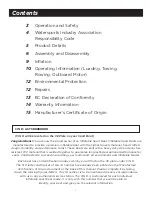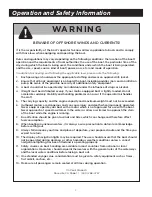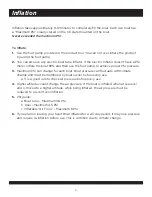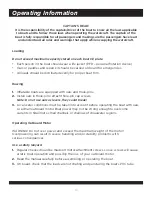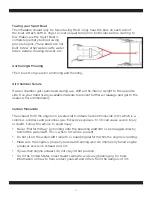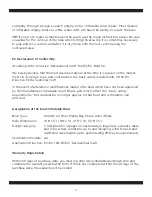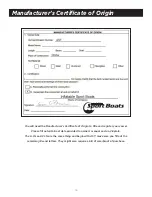
12
Environment Protection
keep the oil and gas containers inside the boat, anchored/weighed or strapped down at
all times while boat is in use. In case of oil or fuel leakage, reduce leak as much as possible,
recuperate the waste, and head to the closest shore. Contact the local environment state
board about leakage situation.
Repair Procedure
use PVC adhesive found at your local marine store. We suggest Clifton urethane adhesive.
you can find the glue at www.nRSWeb.com/item #1901.
before you begin, make sure you are working in a well-ventilated area, climate controlled
to at least 70 degrees. It is advised that you wear protective gloves when working
with chemicals.
After you have done the repair to the tube, it must sit undisturbed for at least 24 hours.
When making a repair, do not inflate tube to maximum capacity. It is recommended that
the tube be soft for all repairs.
Repairing Holes in the Tube
1.
the repair of a small leak or puncture less than ½ inch can be done with a round patch,
3 inches diameter, and minimum.
2.
Cut the round patch. use the patches enclosed with your Inflatable Sport boats.
3.
Place the patch over the area to be repaired, outline with a pen.
4.
Wipe patch with clean towel. using a clean towel, wipe area on the tube to be repaired.
5.
Apply 3 thin, even coats of adhesive to the surface of the boat and the patch.
Wait 5 minutes between each coat. After the 3rd coat, wait 10-15 minutes before
placing the patch on the boat skin.
6.
Allow boat to sit for 24 hours. Don’t rush the drying.
7.
Air up the tube and check for leaks before use.
large repairs of PVC, seams, bulkheads, and transom:
Contact your boat dealer or
manufacture if possible. Alternative is to send your tube to a professional inflatable
boat repair company for repairs. you can look online for your nearest boat repair


